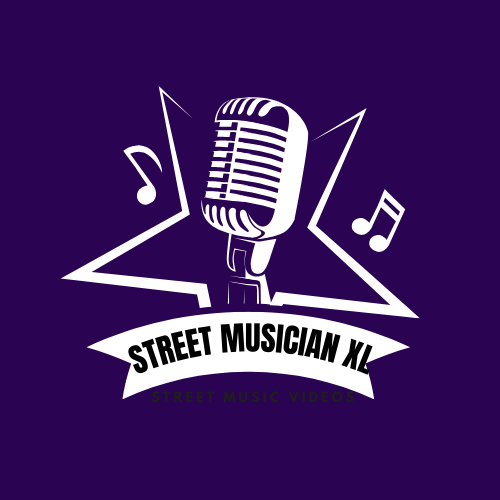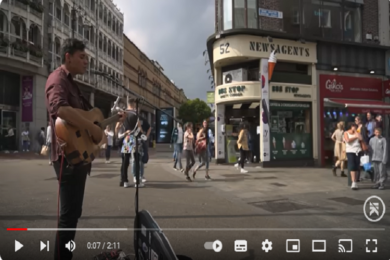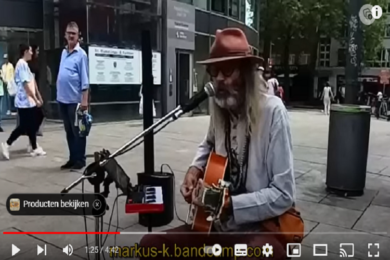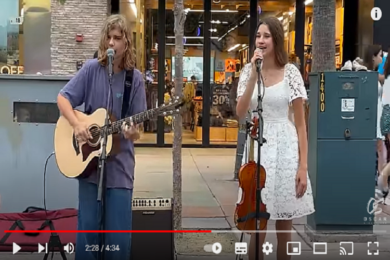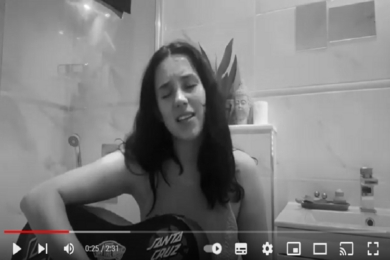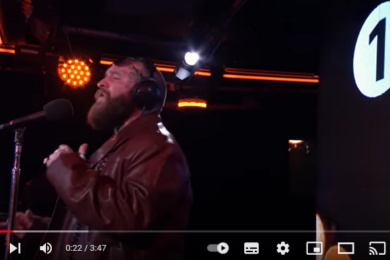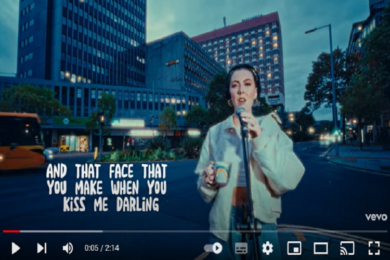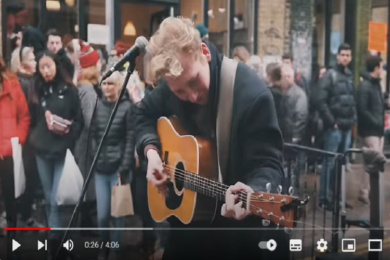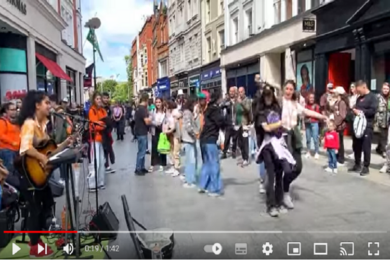In the streets, like old graffiti’ Where Hip-Hop Music and Street Performances Meet
Music street Hip-hop music originated as a way for those from marginalized backgrounds to express themselves amongst their peers and their wider community. Right from the beginning, this genre had a strong element of being about performing in a public space. Fifty years after the dawn of modern hip-hop, this form of music is still alive and well on the streets of cities worldwide.
Hip-Hop Came From the Streets
2023 marks an important year for hip-hop. Although this form of music has been around for centuries, the modern era of hip-hop is considered to have been established approximately 50 years ago. Back in 1973, against the backdrop of poverty and constant evictions in inner-city New York, a DJ named Kool Herc was counted as the first known artist to isolate the breakbeats of soul and R&B songs on his turntables. In doing so, he helped birth the modern-day hip-hop beat. From this seemingly straightforward moment, street poets (or rappers) found the energetic sound they needed to complement their lyrics, bars, and verses about the trials of urban living. Therefore, hip-hop was born on the streets and has remained on the streets ever since.
The Strenght of Street Knowledge
Hip-hop has evolved massively since the 1970s, but the idea of it being about street performance and performing in a public space has always been a consistent theme. The very public nature of hip-hop is what has shaped many of the best artists to refine their rapping skills - to paraphrase NWA, it’s in the streets that they found their “strengths”.
A prime example is the Brooklyn rap icon Biggie Smalls, who regularly gave street performances in his neighbourhood of Bed-Stuy, entertaining friends, fans, and passers-by with his razor-sharp lyrics and observations. The reaction of the crowd to individual verses is part of what makes hip-hop artists stand out - very often, the best artists will write bars to delight members of the public who will be listening to them, making sure that they fill their lyrics with every possible witticism, image, double meaning, or pop-culture reference that can.
Similarly, hip-hop has always been about reflecting on what ‘life on the streets’ is truly like. This means that the lyrical content often focuses on issues like poverty, inequality, social justice, and the harsh realities of violence and crime. Many of the most authentic hip-hop artists grew up on the streets, performed on the streets, and rapped lyrics that reflect precisely what life is like on the streets.
Famous Hip-Hop Artists Who Started as Street Performers and Buskers
Due to hip-hop being considered too controversial and risky for many major record labels at the beginning, some of the best hip-hop artists made their living - literally - as public performers, often rapping on street corners and hawking tapes and CDs to any interested passer-by.
Jay-Z was among several rappers in the East Coast scene in the ‘90s who started by selling CDs out of the back of his car, gaining both acclaim and notoriety in the underground scene, even as he sharpened his skills as a performer.
Elsewhere, artists like Detroit rapper Eminem gained widespread attention as a street performer, noted for his quick-witted lyrical gifts in the heat of public ‘rap battle’ situations. His particular story was dramatized in the commercially successful film 8 Mile.
Hip-Hop Artists as Buskers
The streets of most major cities worldwide are packed full of young, emerging hip-hop artists who have taken up busking to showcase their rapping skills in public (and hopefully make money in the process). This is as true for New York City or LA as it is for cities far beyond America, such as Barcelona, Paris, Berlin, or Toyko (only the language changes, not the genre).
Part of the appeal for hip-hop artists who want to become buskers, or street-artists-for-money, is that they can typically operate with very little equipment, meaning that it is far more accessible than some other genres. Whereas budding rock stars need to cart all manner of instruments and electronic equipment around when they go busking, rappers can often get by with just an amp to provide a backing beat (or not even that, if they want to go acapella).
Once again, therefore, hip-hop proves itself to be the genre which is accessible to those of low incomes.
Hip-Hop Artists as Street Musicians in the Modern Day
Despite the growth of music made online - in particular, the growth of ‘SoundCloud rap’ or trap-rap, which are geared more towards streaming sites and less towards public performance - hip-hop still has an essential place on the streets.
Many of today’s most prominent hip-hop artists have used social media and streaming to their advantage, with several of the best artists finding success after going viral from a particularly impassioned busking performance.
Similarly, hip-hop has become much more accepted in the musical mainstream, meaning street rappers have more opportunities than ever before. To this end, many major cities now host street festivals or dedicated events which will feature hip-hop artists. This caters to performers who want to grow their careers, as well as to hip-hop fans who want to hear the best that the genre offers.
Conclusion: Hip-hop was born on the streets - and the public performance element is still what makes it dynamic
50 years on from the birth of modern-day hip-hop, this genre is still very much shaped by street musicians. Some of the biggest stars of today, from Post Malone to Anderson .Paak to Kendrick Lamar, cite their street performance days in their song lyrics as a way to assert their authenticity.
And beyond the big stars, hip-hop is still very much alive on a grass-roots level. Go to the busking areas of any major city, and chances are high that you’ll encounter an emerging hip-hop artist baring their soul to a crowd of passers-by, often with a suitcase of CDs in tow.
The strength of the street can still be felt everywhere.
